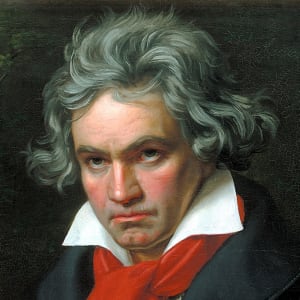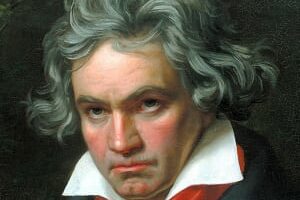
Though the whole genre of older, Western, orchestral music is termed “Classical music,” there is, in fact, a specific period called the Classical period. You’re probably already familiar with notable composers of this era, including Mozart and Beethoven. Let’s take a more in-depth look into this critical time in music history! For a brief introduction, check out this short video.
Before we get into the music, let’s talk about what was happening in the world. This was a time known as the Age of Enlightenment. There was an increased focus on radical ideas, including human rights and freedom of religion. Ideas that flourished during this time included challenging authority, and both the American and French Revolutions happened during this time. A lot of change was happening, and the music was changing with it. Instead of being structured and ordered like Baroque music, Classical music became less complex, more expressive, and more focused on the melody.
Symphonies are characteristic of the Classical period. Though they started out as rigid compositions with three movements, the first and last being fast-paced, divided by a slow middle, they evolved into four-movement pieces with vast potential to explore the rich sounds and emotions of the orchestra. The orchestra itself changed a lot during the Classical period, too. The harpsichord, characteristic of the Baroque period, became less important and was soon replaced by the piano. This was because the piano could play softer and more subtly, which the harsh harpsichord could not do. Because of the increased focus on the piano, many of the sonatas written during this time were for the piano. In addition to the piano, the orchestra experienced new sounds through blending the woodwinds and strings. Baroque orchestras didn’t include instruments besides the strings, so adding woodwinds to the orchestra created a unique sound in the Classical period. The woodwinds became a standard section of the orchestra, and this more closely resembles modern orchestras. If you need a refresher on Baroque music, check out our Introduction to Baroque Music here!
Mozart and Haydn are two notable composers of the Classical period, and two of their compositions are linked below. Listen to Mozart here and Haydn here for a few minutes. Music from this period focuses on the melody—can you hear the melody in the videos? Classical music is also more expressive. Write down the feelings and emotions you’re experiencing as you listen!
Beethoven is another monumental composer of the Classical period. His early work was inspired by Haydn and Mozart, but he eventually expanded on it and broke away, making him a forebearer of the Romantic era.
You’ve probably heard the iconic beginning of this piece, Symphony No. 5! What emotions do you think he’s trying to convey?
Now listen to his Symphony No. 6 in the video here. How is it different from Symphony No. 5? What words can you use to describe these new feelings? What picture does the music paint? Try to paint the picture yourself!
And there you have it, a brief introduction to the Classical period of music! If you’re curious to learn more, look up some of the composers mentioned here and their pieces!
Sources:
Discover Music: Classical Music https://www.classicfm.com/discover-music/periods-genres/classical/
Classical Music Era: A Beginner’s Guide: https://www.classicfm.com/discover-music/periods-genres/classical/classical-music-beginners-guide/
Enlightenment: https://www.history.com/topics/british-history/enlightenment

